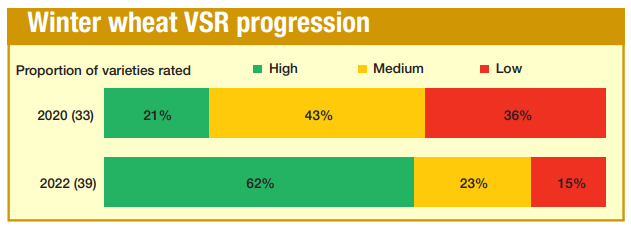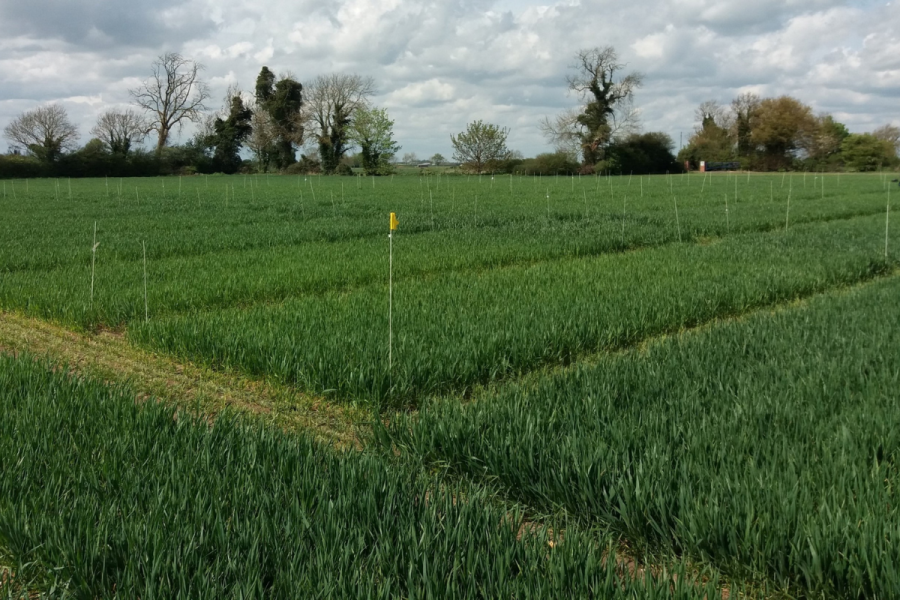Dependability and marketability are probably some of the most desirable characteristics in a variety. CPM finds out about a system that goes above and beyond the AHDB Recommended List to help identify the most reliable performers.
“We’ve evolved the scoring to be more critical of lower ratings, introducing a minus figure to penalise weaknesses that could lead to increased production costs and higher risk.”
By Lucy de la Pasture
Growing crops is a risky business at the best of times. Making the right variety choices lies at the heart of managing a host of potential liabilities – from the weather, diseases, grassweeds and the market itself.
The AHDB Recommended List has long been the guide to varietal characteristics and provides valuable information when it comes to choosing a variety to suit different situations and markets. But in spite of the hoops varieties have to go through to be selected onto the RL, some candidate varieties get overlooked due to blips in their performance, whereas others excel in RL trials but bomb for various reasons as a commercial crop.
Those varieties which remain growers’ favourites have achieved that status through reliable performance year-on-year, with respectable yields and grain quality that assures a readily marketable crop. But how can you pick out new varieties which will prove to have longevity and versatility before the market has gained enough experience to draw its own conclusions?

John Miles explains that they asked what would constitute a sustainable variety with longevity and wide market appeal and then used these characteristics to develop a Variety Sustainability Rating (VSR) to differentiate varieties.
Agrii asked itself that very question. Building on the advisory list it’s been compiling for many years, the company developed metrics around variety sustainability in 2020 to find the answer, explains Agrii’s John Miles.
“We asked what would constitute a sustainable variety with longevity and wide market appeal and then used these characteristics to develop a Variety Sustainability Rating (VSR) to differentiate varieties. It’s not intended to be a replacement for the RL, it complements it.”
The cereal VSR is based on 11 key characteristics which include resistance to the three main foliar diseases, lodging resistance (treated and untreated), yield resilience under high disease pressure, yield consistency, grassweed competitiveness, orange wheat blossom midge resistance, specific weight and latest optimum sowing date.
One of the challenges growers face when making variety decisions is the number of varieties available, says John. “The VSR helps signpost varieties that will be dependable in any given situation. Variety choice isn’t something that should be oversimplified because farming businesses are so diverse – large and small farms, multiple businesses where arable is just a part, livestock, proximity to market intakes and associated haulage costs. All of these affect attitudes to risk and therefore variety choice.”
The VSR captures the very best genetic material, but this is also reflected by the market. “Some varieties, such as Skyfall, have remained popular for a number of years. These are good allrounders that the market promotes and supplies,” he explains.
“A more recent variety with a high VSR is KWS Dawsum and its potential has already been captured by the market. In contrast, RGT Bairstow also rates highly for VSR but hasn’t had the same market impact which it should do.”
The VSR may also capture genetically strong varieties which failed to make RL selection so has fallen outside of the system, explains John.
“One of these is Fitzroy, a hard Group 4 winter wheat bred by Secobra, which just missed going into RL trials but has strong genetics (Evolution x Stigg). The Stigg parentage brings good disease resistance traits and Evolution brings a good growth habit.
“Another example is LG Tapestry which was an RL candidate that wasn’t selected. Yet it has market versatility (feed and distilling potential), yields well and has strong disease resistance traits with OWBM resistance. Both of these varieties have a high VSR,” explains John.
The higher the VSR, the better the blend of disease resistance but Agrii trials also measure resilience under disease pressure, which gives a better indication of the interaction of diseases that commercial crops will experience.
Another key trait is lodging. “There’s nothing that ruins a grower/agronomist relationship like flat crops,” he quips. “The dry springs we’ve experienced of late reduce lodging risk, so some of the newer varieties on the RL will be more suited to dry springs as they haven’t really been tested for lodging risk. However, Agrii trials take place at sites where lodging risk is maintained and this feeds into its rating.”

Source: Agrii, 2023.
VSR also takes into account specific weight, an important metric because the specific weight achieved in farm trials is generally lower that those recorded on the RL, notes John. “Some varieties have a very low safety margin, a point proven recently by Theodore.”
Agrii also conducts trials with and without herbicide to assess grassweed suppression and yield. Sowing date is also assessed and as a result of these metrics, Agrii has utilised Skyfall in the East to help combat blackgrass and maximise the opportunity for late drilling.
Since 2020, when the VSR system was first introduced, the proportion of varieties that fall into the high, medium and low categories has already shifted, reflecting the ‘cleaner’ genetic material breeders are bringing to market and grower demand for disease resistant varieties, says John. As a result, many more varieties are falling in the high VSR category.
“In 2020, only 21% of the 33 varieties rated obtained a high VSR, with 36% in the low category. By 2022, 62% of the 29 varieties rated were in the high VSR bracket with just 15% scoring poorly.”
That provided a new challenge, so the VSR rating system was pulled apart to provide even more differentiation between the highly rated varieties, explains John. “We wanted to be able to address problems like Skyfall, which scores highly on important metrics but if it’s a bad yellow rust season and crops require additional fungicides then you have to question its sustainability.”
The same applies to varieties which have very good septoria resistance, he adds. “If good septoria resistance comes with a susceptibility to brown rust or lodging, then perhaps it’s not as sustainable as the VSR indicates. We didn’t want one score swaying the overall VSR rating, so we’ve revised the metrics.”
Under the new rating system, a ‘very high’ VSR category has been introduced to differentiate the ‘best of the best’. “We’ve evolved the scoring to be more critical of lower ratings, introducing a minus figure to penalise weaknesses that could lead to increased production costs and higher risk when growing a variety.”
As a result, Skyfall has dropped its rating – its weakness being penalised in spite of all of the varieties benefits, says John. “KWS Extase has maintained its high VSR, but KWS Palladium has moved up to a ‘very high’ VSR. Of the Group 3 wheats, Tapestry has been promoted to ‘very high’. KWS Dawsum and LG Typhoon achieve very high VSRs in Group 4, with Fitzroy maintaining its high rating.
The same rating process is applied to winter barley where Belfry and SY Armadillo lead with ‘very high’ ratings and SY Kingsbarn drops to the medium category, adds John.
Sustainable Solutions![]()
With input prices still high but grain and oilseed prices struggling to maintain the level reached in 2022, there’s little doubt that the stakes are rising in 2023. That means making decisions on the farm which maximise profitability have never been more important.
In this new series, CPM has teamed up with Agrii’s Green Horizons initiative to explore ways in which farm-focused research is helping to raise both economic and environmental sustainability.
Better informed variety choice is just one part of this initiative’s practical programme of action, which includes charting paths to net zero, maximising soil health and evaluating crop protection alternatives as well as all-round farm efficiency improvement.
Up-to-date information on all these areas is available here.
This article was taken from the latest issue of CPM. Read the article in full here.
For more articles like this, subscribe here.
Sign up for Crop Production Magazine’s FREE e-newsletter here.




